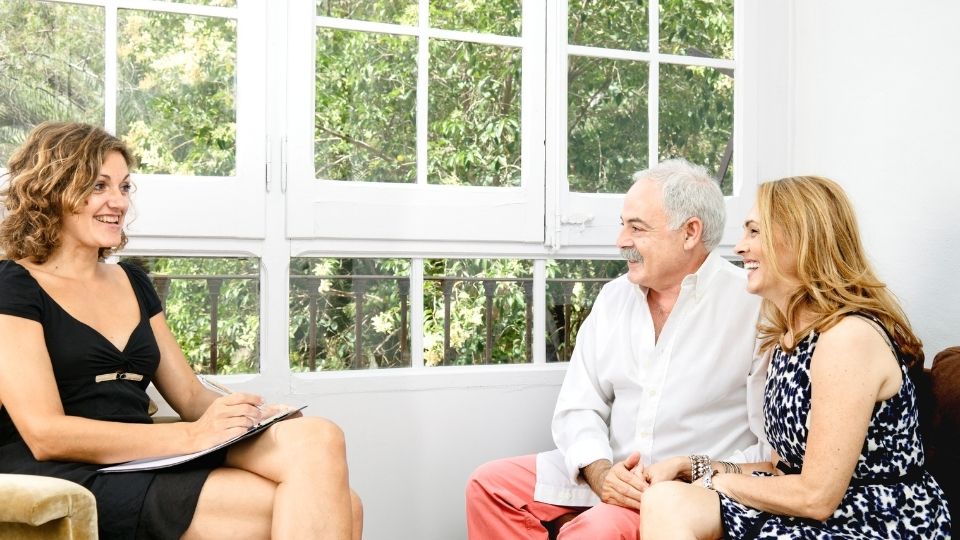Have Fun! The Importance of Play in Couple Relationships

Boring, drab, lifeless, stale, dull, tedious. These are probably not the words you hope to use to describe your relationships. How about well planned, frugal, precise, productive, serious, busy? Though these can be characteristics of a strong, healthy relationship, they are not likely what make a relationship so appealing. What was it about the beginning of your relationship that made it so attractive? What is it about your partner that made you want to spend time with him or her?
When couples first meet they usually spend a significant amount of time engaging in fun activities together and spending quality time getting to know each other. Most people probably plan to keep that fun and spark in their relationship forever, but over time with all of the meetings, kids, household chores, long work hours, and everyday challenges, taking time to really enjoy being together and have fun often takes a back seat to other priorities (Markman, Stanley, Blumberg, Jenkins, & Whiteley, 2004; Parrott & Parrott, 2006). While taking the time to be playful in relationships can be enjoyable, playing as a couple is not only about having fun, but can serve many other functions.
Purpose of Play
Playing together increases bonding, communication, conflict resolution, and relationship satisfaction (Baxter, 1992; Betcher, 1977; Kopecky, 1996; Vanderbleek, 2005). Play can also promote spontaneity when life seems routine, serve as a reminder of positive relationship history, and promote intimacy (Baxter, 1992; Lauer & Lauer, 2002). Having fun together can help couples feel positive emotions, which can increase relationship satisfaction, help couples to unite in order to overcome differences and give hope when working through difficult challenges (Aune & Wong, 2002; Betcher, 1977; Lauer & Lauer, 2002). Some studies have even found that having fun together is the most important factor in the sense of friendship, commitment, and the greatest influence on overall marital satisfaction (Markman, et al., 2004).
What is Play?
So what does it mean to play? A broad definition of play is “any pleasurable use of discretionary time” (Charles, 1983, p. 4). What is pleasurable may, of course, vary from person to person. In addition, researchers have found that play is not only pleasurable, but also serves as a developmental activity (Colarusso, 1993). Just as children learn and develop through play, it can also promote the engagement and mastery of developmental tasks in adults.
According to Plato, “You can discover more about a person in an hour of play than in a year of conversation” (Plato, n.d.). While people can sometimes mask their true selves while talking in conversation, play is a form of modeling real life, which brings forth true reactions to different circumstances. For example, how a person reacts to losing a game may be indicative of his or her reaction to losing a job deal. What a person does to overcome a difficult situation during play will likely be the same way he or she overcomes difficult situations in other areas of life. Whether a person takes charge of their team or sits back while playing a sport may show how they work with teams on the job. Play can teach us about ourselves and our partners in casual situations where the consequences are not so long lasting.
Common Barriers and How to Overcome Them
So how do we add more play into our relationships? Consider some of the following suggestions on how to overcome common barriers to play:
- Schedule some fun. Many couples intend to play but never actually make it happen (Parrott & Parrott, 2006). Agree on a date and time and put it on the calendar (Markman, et al., 2004). When we schedule time for fun, we are more likely to make it happen.
- Get active. Lack of energy and unhealthy living habits can often leave us feeling drained even when we find time in our busy schedules for fun (Braff & Schwarz, 2004). Make a plan to help each other eat right and participate in physical activities. You can make physical activity fun!
- Give yourself permission to be a kid again. Because we spend so much time acting like adults, we may feel it is childish to play and instead want to act serious to maintain our dignity (Markman, et al., 2004). Let your partner know your fears and trust him or her to help you overcome them. Do fun things that you feel comfortable with (Braff & Schwarz, 2004).
- Be open to trying new things. Sometimes our idea of fun is different than our partner’s idea of fun. Find out why your partner enjoys what they do by asking questions and trying it yourself. Be open minded and willing to compromise. You might like it much more than you thought you would!
- Protect fun from conflict and resentment. Sometimes negative feelings for our partner or conflicts may threaten to ruin a fun activity. Agree ahead of time to focus on having fun during the activity and to discuss important issues and conflicts at another time (Markman, et al., 2004). It may be hard to do this at first, but spending this important time together will strengthen your relationship and your ability to resolve conflicts in the long run.
- Focus on teamwork. Some people are very competitive and may avoid playing games because they know they will become too competitive and want to win, even at his or her partner’s expense. In this case, learn a new game together, or find an activity where you can play or work as a team (Braff & Schwarz, 2004).
- Budget for some fun. For many, money is tight, but there are often ways to find a small amount of money in a budget for some fun activities or for a special occasion. Just remember, having fun does not require a lot of money, and there are lots of fun activities that are free!
- Make having fun more of a priority. Some people feel they are too busy to have fun or that it’s unproductive and unnecessary (Braff & Schwarz, 2004). Play really can help us to strengthen our relationships with others; just try it and see just how much more enjoyable your relationship can be! Take advantage of the simple and seemingly mundane moments you have every day to add a little fun. Try a silly twist to saying hello or goodbye, add something fun to meal time or take time to just stop and watch the sunset on the way back from running errands. It doesn’t have to take a lot of time to add a little fun into your routine, and it can create many lasting memories (Parrot & Parrot, 2006).
Making a Plan and Taking Action
Consider what blocks to fun you are currently facing and discuss what you are willing to do about them with your partner. It may also be helpful to brainstorm a list of things you want to try or things you think are fun that you want to do again. At this point, don’t worry about cost or time, the sky is the limit! You may want to make lists separately (see who can get the longest list or see if you can come up with an activity for every letter of the alphabet) and then discuss your lists and decide on activities you want to do together. Once you have decided on what you want to do, prioritize the activities, keeping in mind a plan of how to budget your resources of time, energy and money to make it happen. Write it on your calendar and follow through with your play date. Be sure to schedule play dates often and take turns choosing the activities that you can both agree on.
Keeping the Fun Alive
Strong, healthy, happy, and long lasting relationships do not just happen, they require effort; and one of the things every relationship needs is a little fun. Be intentional about having fun in your relationship. As you become aware of the barriers to fun, make plans, and take action to overcome them, you will find greater happiness in your relationship and life in general.
References
- Aune, K.S., Wong, N.C.H. (2002). Antecedents and consequences of adult play in romantic relationships. Personal Relationships 9, 279-286.
- Baxter, L.A. (1992). Forms and functions of intimate play in personal relationships. Human Communications Research. 18,336-363.
- Betcher, R. W. (1977). Intimate play and marital adaptation: Regression in the presence of another. (Doctoral dissertation, Boston University, 1977). Dissertation Abstracts International, 38, 1871.
- Braff, E., & Schwarz, R. (2004). The power of play in relationships manual. Unpublished manuscript.
- Charles, J. M. (1983). Adult play. Paper presented at the National Convention of the American Alliance for Health, Physical Education, Recreation and Dance, Minneapolis, MN.
- Colarusso, C. A. (1993). Play in adulthood: A developmental consideration. Psychoanalytic Study of the Child, 48, 225-245.
- Kopecky, G. (1996). Make time for play. American Health, 15(4), 65-67.
- Lauer, J. C., & Lauer, R. H. (2002). The play solution: How to put the fun and excitement back into your relationship. Chicago: Contemporary Books.
- Markman, H.J., Stanley, S.M., Blumberg, S.L., Jenkins, N.H., & Whiteley, C. (2004). 12 hours to a great marriage: A step-by-step guide for making love last. San Francisco: Jossey-Bass.
- Parrott, L., Parrott, L. (2006). Your time starved marriage–how to stay connected at the speed of life. Michigan: Zondervan.
- Plato (n.d.) Plato Quotes. In Thinkexist.com. Retrieved from http://thinkexist.com/quotation/you_can_discover_more _about_a_person_in_an_hour/11765.html
- Vanderbleek, L. (2005). Couple play as predictor of couple bonding, physical health and emotional health. Dissertation.
Authors
Naomi Brower, MFHD, CFLE, Utah State University Extension
Related Research
















